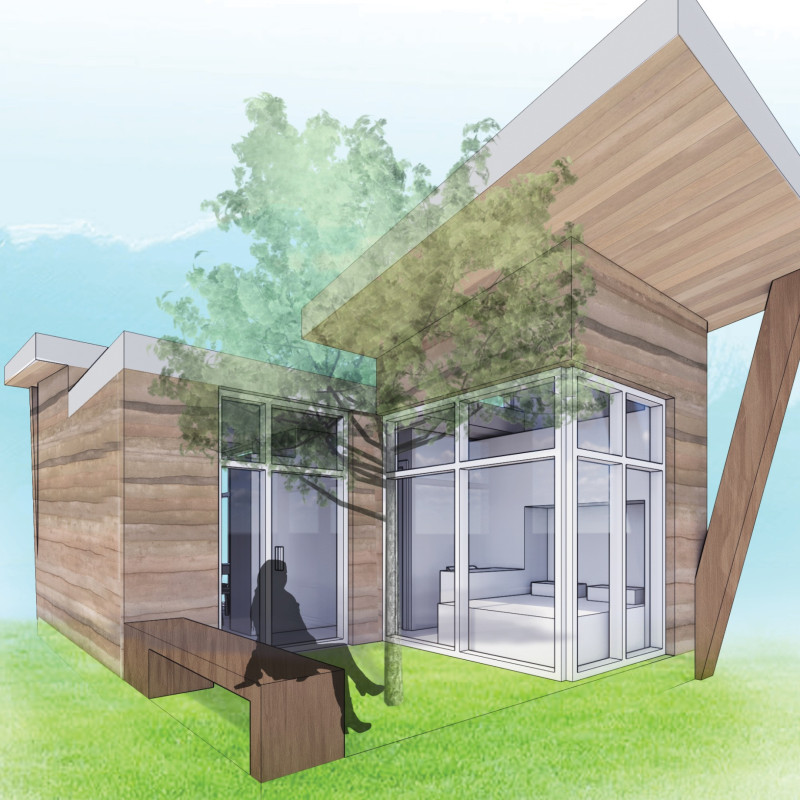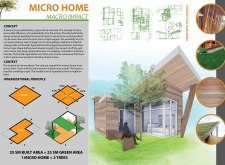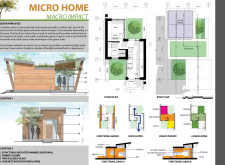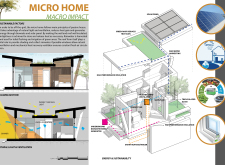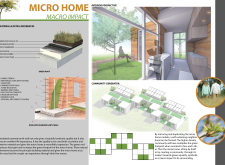5 key facts about this project
Functional Space Organization
The layout of the micro home is meticulously planned to maximize usability within a limited footprint. It features designated zones for public, semi-public, and private areas, ensuring that the space serves various functions efficiently. Public areas, such as living and dining spaces, encourage social interactions, while private areas, including bedrooms, promote individual retreat. The circulation spine running through the structure connects these spaces, facilitating movement and contributing to a cohesive design.
Sustainability and Materiality
This project emphasizes a commitment to sustainability through the use of eco-friendly materials and passive design strategies. Rammed earth forms the primary structural component, offering excellent thermal performance and natural aesthetics. Triple-glazed windows enhance insulation, allowing ample natural light while reducing energy consumption. A green roof system contributes to thermal regulation, stormwater management, and biodiversity, presenting an innovative environmental solution that distinguishes this project from conventional housing models.
Unique Design Approaches
What sets this micro home apart from numerous similar projects is its adaptability to various locations and community contexts. The design allows for multiple units to coexist harmoniously, creating a micro-community that values shared resources and green spaces. The integration of rainwater harvesting systems further enhances the sustainability of the home, providing an invaluable resource for occupants and the local ecosystem. Additionally, flexible spatial arrangements allow residents to tailor the interior to their specific needs, demonstrating a forward-thinking approach to residential planning.
For readers seeking in-depth insights into this micro home project, a review of the architectural plans, sections, and designs will provide further clarity on the innovative features and functional details. This examination can deepen understanding of how modern architecture can effectively address the challenges of contemporary living.


